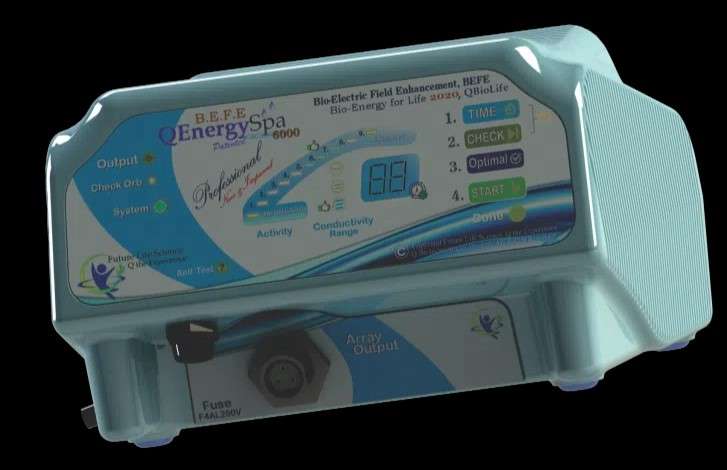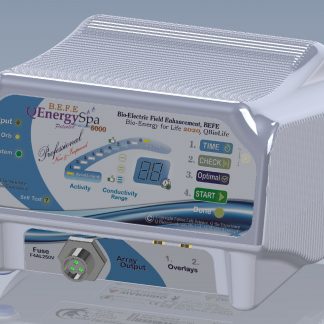QEnergySpa For Your Home or Practice
Manufactured in Australia, the patented QEnergySpa, BEFE is unlike any technology available on the market today, owing not only to the science it is based upon (Quantum Reality Field Science, QRFS) but also to the precise design details of the Orb (water module) and the manufacturer specified electronically matched circuitry components within the three available power supplies. The original B.E.F.E. technology. Bio-Electric Field Enhancement, BEFE. Bio-Energy Therapy Technology. Empower Your Body to Heal. As well as the manufacturer-specific electronic matched circuit components with (4) available power supplies.

Tell me more about the QEnergySpa!
- Q2Spa Benefits
- Features of the QEnergySpa
- Q Energy Spa is the BEST Ionic Foot Detox Machine
- FAQ Reasons to Use the Q2 in your Foot Soak Tub
- Q2 Spa QEnergy Spa Science
- Bio-Energy Key Concepts
The benefit of Q2 is an advantage to all.
This Q2 BEFE foot bath is NOT a foot soaker massager. It is a true wellness session in a footbath. Try it now!
 BE THE FIRST TO KNOW ABOUT UPDATES.
BE THE FIRST TO KNOW ABOUT UPDATES.
Subscribe to the Q2Spa.com newsletter to receive timely updates.
Q2Spa QEnergySpa

QEnergySpa Your online Resource for Q2Spa.com | US Distribution Footbath from Australia | World's Best Ionic Footbath


